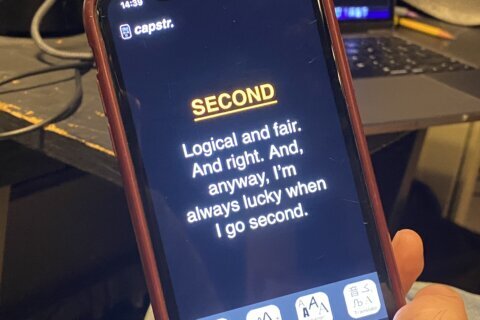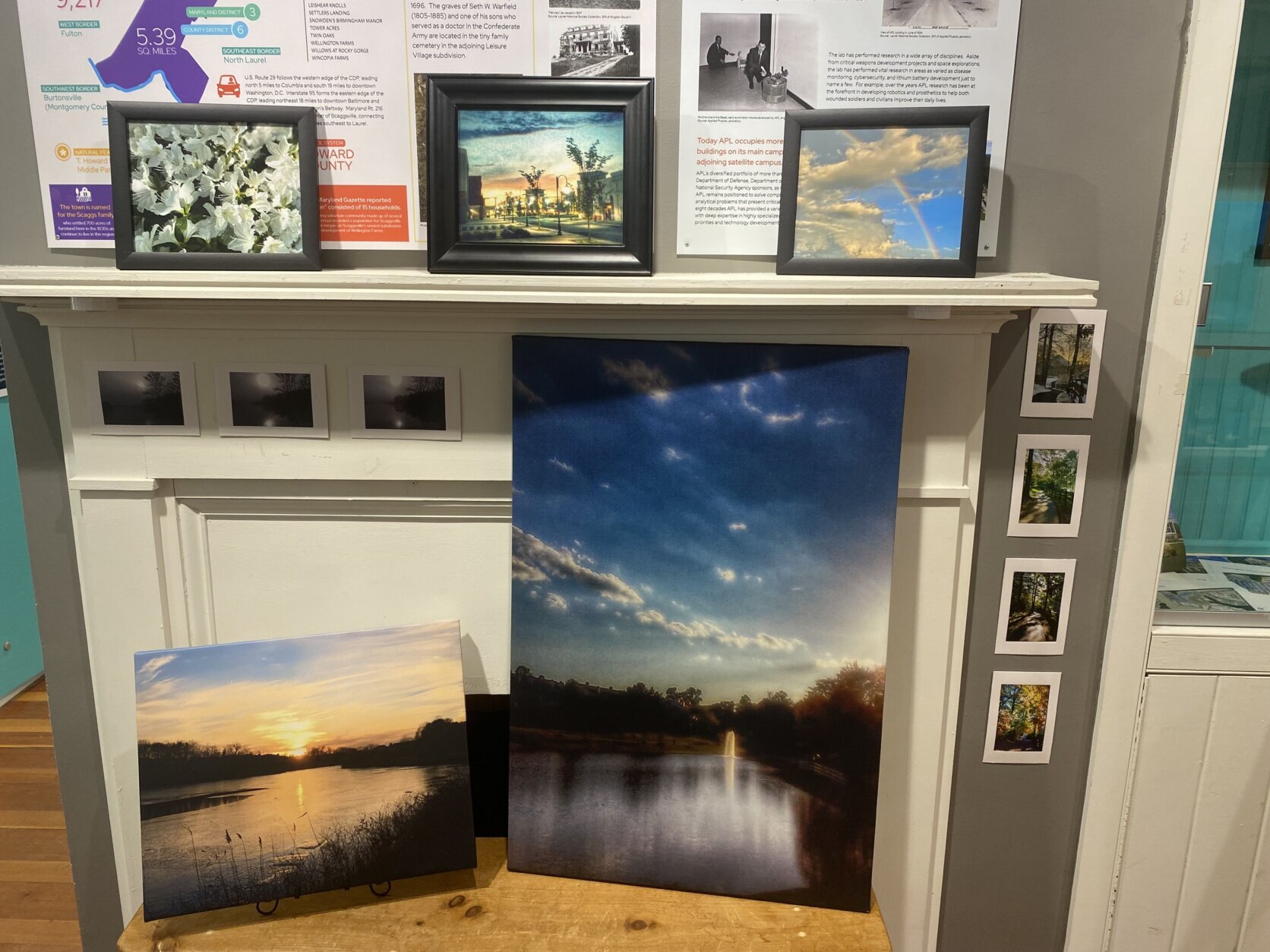
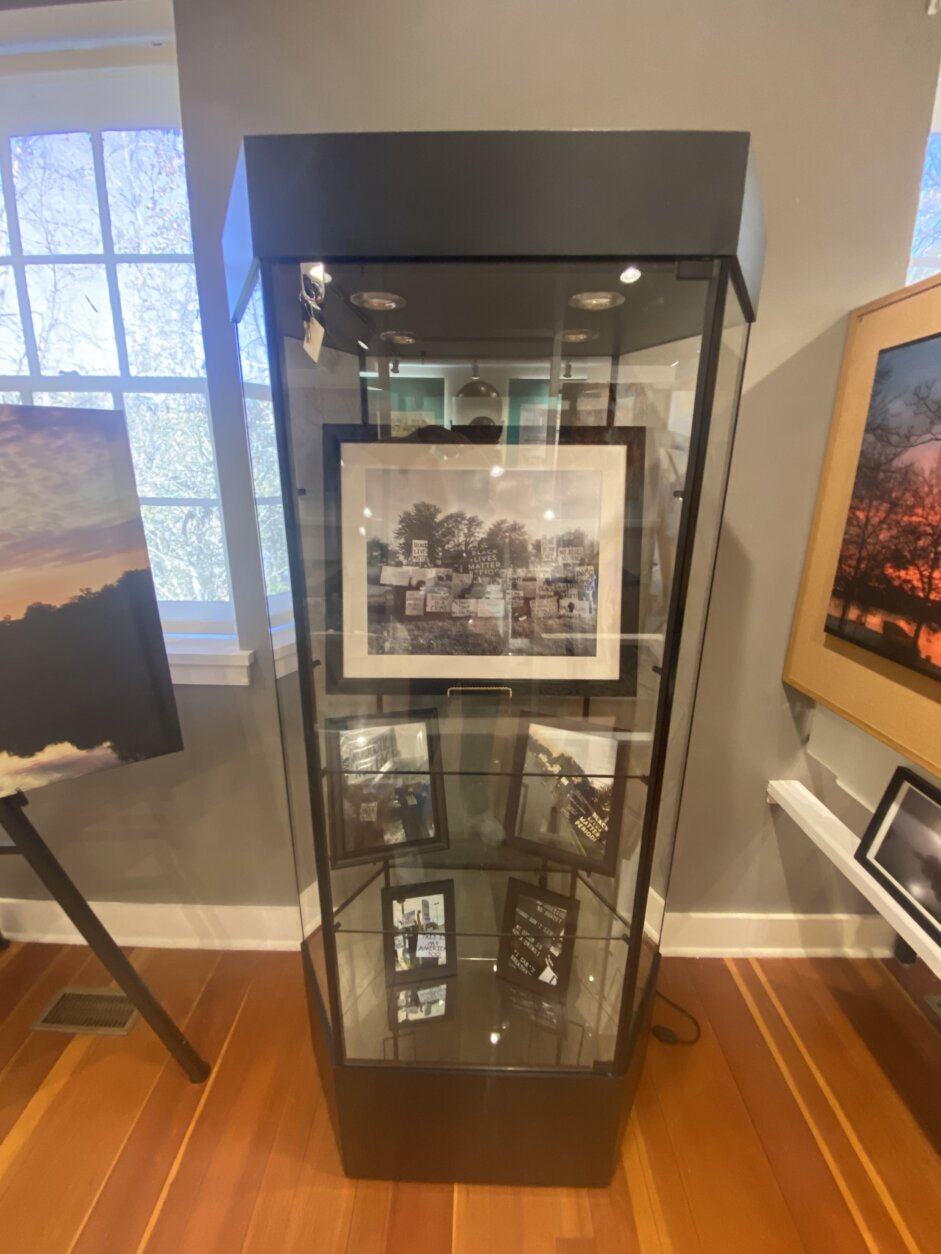
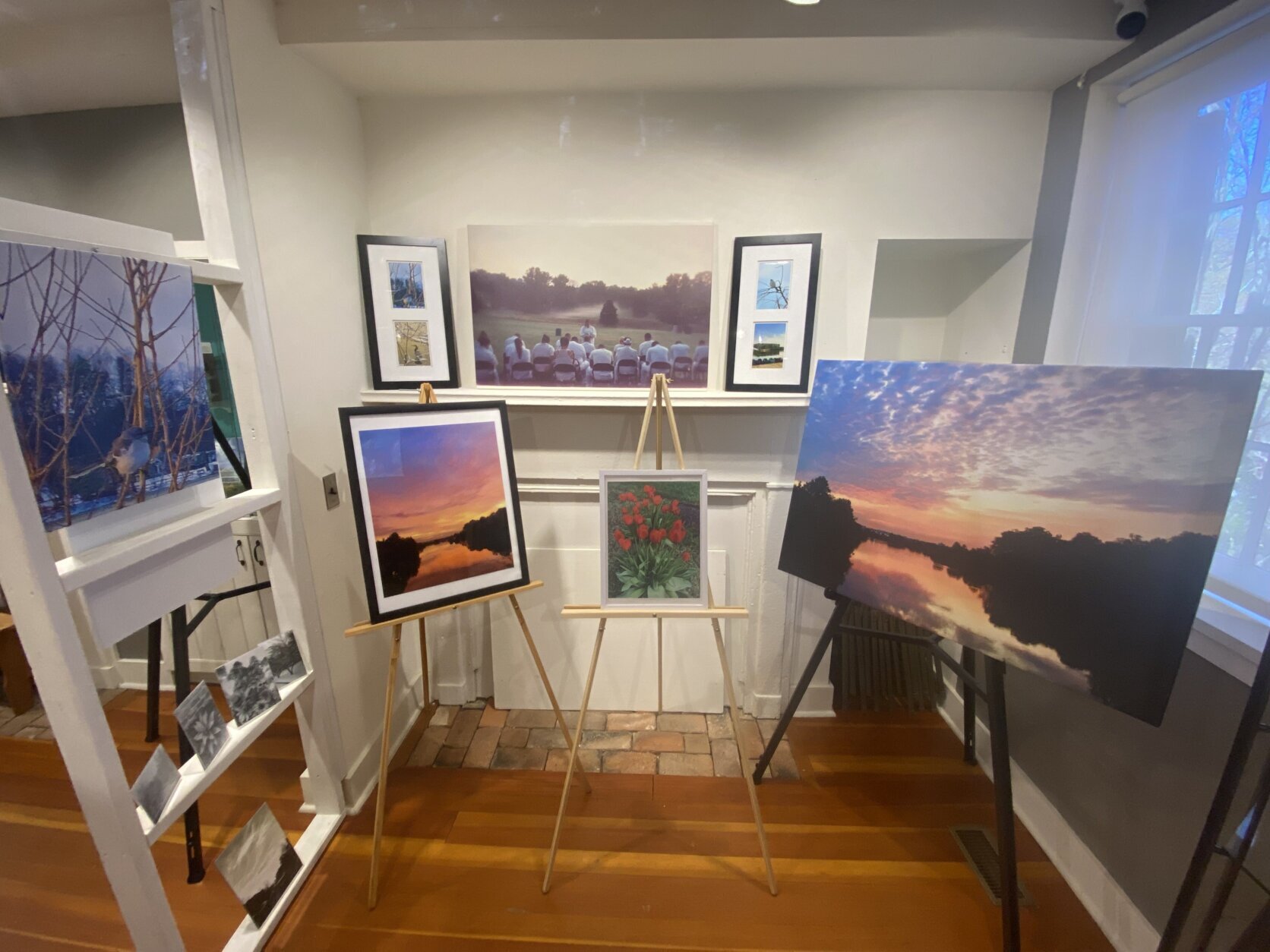
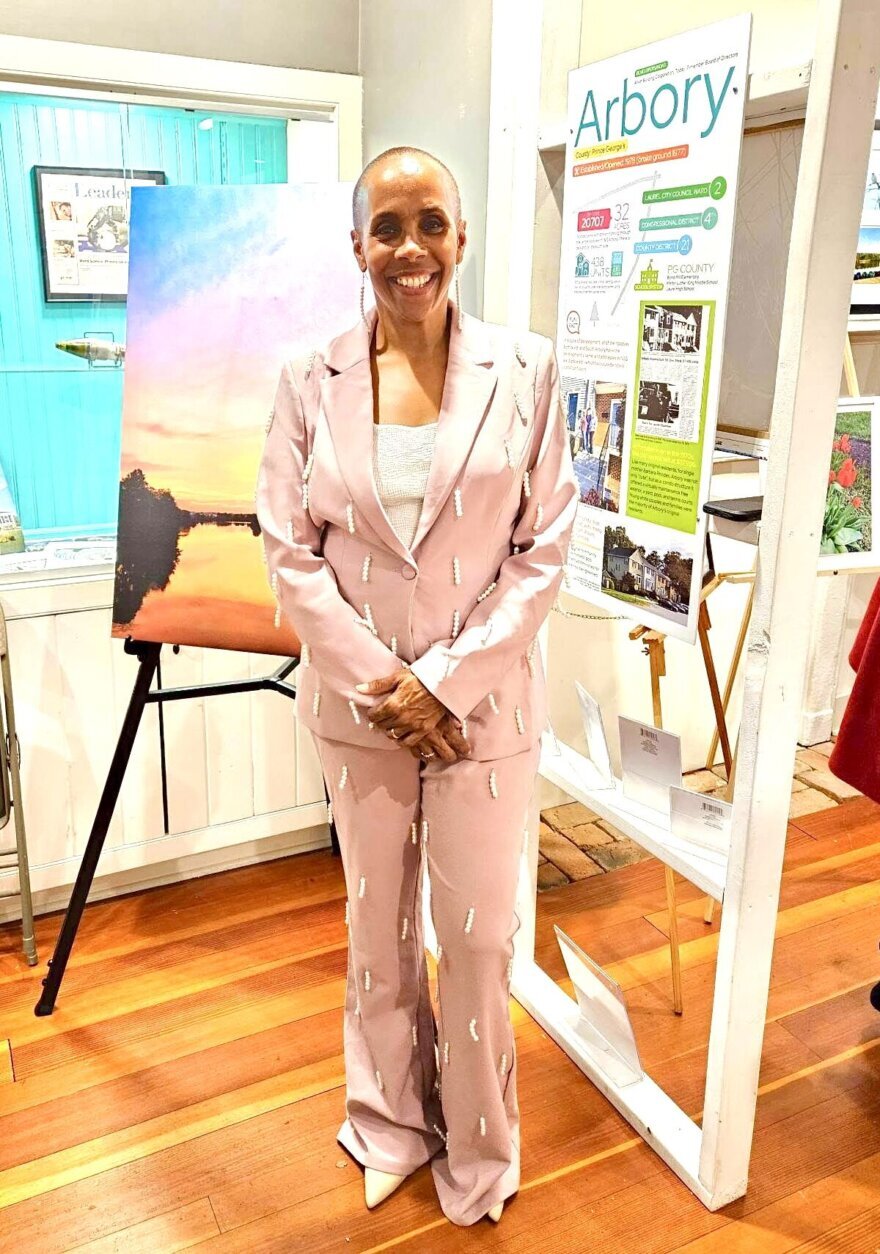




Hear our full chat on my podcast “Beyond the Fame with Jason Fraley.”
She was the lead actress in Spike Lee’s breakthrough film “She’s Gotta Have It” (1986).
Now, Tracy Camilla Johns, 60, presents her photography exhibit at the Laurel Museum, operated by the Laurel Historical Society in Maryland where she’s lived for 25 years. The exhibit runs now through Thanksgiving.
“This particular exhibit is specific to Laurel,” Johns told WTOP. “It’s kind of a quiet, kept secret that I have resided in the DMV for some time … The running joke is: ‘Where is that [photo location] in Laurel?’… There’s the lake, there’s a lot of local foliage … People come and go every day and don’t pay attention to the beauty … It’s a quiet little museum in a small part of the city, but it’s a treasure. I grew up in New York, so I’m a museum junkie.”
Born in 1963, Johns grew up in Hollis, Queens watching Broadway plays, drawing and listening to music.
“This is the 50th anniversary of hip-hop, so I grew up in the land of Salt-N-Pepa and Run DMC, I remember when rap started with the whole Queens influence,” Johns said. “I’m absolutely still a die-hard New Yorker, it never leaves you … I came from one of those wonderful African American families. Both of my parents were working and in school when I was growing up … When I declared I wanted to pursue art, they looked at me like I was crazy.”
She attended the Fashion Institute of Technology in Manhattan where she took a theater class as an elective. Her final project brought her teacher and classmates to tears. Less than a year later, she met NYU film graduate Spike Lee, who had just won the Student Academy Award for his thesis film “Joe’s Bed-Stuy Barbershop: We Cut Heads,” on which Ang Lee (“Life of Pi”) served as assistant director and Ernest Dickerson (“Juice”) was cinematographer.
“I assumed ‘Spike Lee’ was going to be a Caucasian guy in a leather jacket with studs on it — and he was anything but,” Johns said. “I was actually cast in another film that never came to fruition … called ‘Messenger’ about a bike messenger … I’d been cast as the female lead, but by the time we got to production, there was no film and I was actually quite distressed … But that started our friendship and he wrote ‘She’s Gotta Have It’ for me.”
Shot over 12 days in Brooklyn’s Fort Greene neighborhood on a shoestring budget of $175,000, “She’s Gotta Have It” marked Lee’s feature-film debut. Not only was it a groundbreaking moment for Black cinema, it also joined Jim Jarmusch’s “Stranger Than Paradise” (1984) to launch the American independent film movement of the 1980s.
“During the process of the film being edited, there were several screenings just to get [financial] backers to get the film completed,” Johns said. “This is where he coined the term ‘guerrilla filmmaking,’ because we were going from location to location, many that required permits and we had none. We had a lookout [person] and we would literally collapse the equipment and run to avoid the police.”
From a directorial standpoint, Lee had not yet invented his signature “double-dolly” shot — that would come later in “Mo’ Better Blues” (1990) and “Malcolm X” (1992) — but the film still features wild experimentation like breaking the fourth wall, fragmenting the narrative, even shifting from black-and-white to color for a dance sequence like the old dream ballets of “An American in Paris” (1951), right down to the gifting of a flower.
“My favorite scene from looking at it recently was the Thanksgiving scene,” Johns said. “That had a lot of different things going on in the angles and everything that we used, but overall, the film was so unique.”
As for her character, the lead role of Nola Darling was a fiercely polyamorous woman juggling three suitors: Jamie Overstreet (Tommy Redmond Hicks), Greer Childs (John Canada Terrell) and Mars Blackmon (Spike Lee). The character was also a muralist, echoing her real-life friendship with Brooklyn graffiti artist Jean-Michel Basquiat.
“Spike knew my illustration background when he created the movie, so some of those things were drawn from Tracy the person,” Johns said. “You had obviously the independence. The sexual liberation part was something that was definitely not seen in Black cinema at that point in time, it was absolutely groundbreaking, it was very controversial. There were thousands of responses and feedback about, ‘You’re showing me, my sister, my cousin.'”
The result won Lee the Award of Youth at the Cannes Film Festival, while Johns was nominated for Best Female Lead at the Independent Spirit Awards, losing to Isabella Rossellini in David Lynch’s “Blue Velvet” (1986).
“We’re in Cannes at the film festival, which was a total dream come true … talk about such a pinch-me moment,” Johns said. “Although he refutes this greatly, [Spike] said he knew, but even in that atmosphere, I had no idea that we were going to return home when it was going to be released, we had lines around the block for months, literally. It turned into this thing far greater than I had even wanted at that time, just the travel experience.”
Johns was suddenly in demand, appearing on TV’s “Family Ties” in 1987, starring in an Air Jordan commercial with Lee in 1988 and appearing in the music video for Tone Loc’s hip-hop hit “Wild Thing” (1988). Despite her cameo as a club patron in “Mo’ Better Blues” (1990), Spike’s career mostly continued without Johns in “School Daze” (1988), “Do the Right Thing” (1989), “Jungle Fever” (1991), “Malcolm X” (1992), “Crooklyn” (1994) and “Clockers” (1995).
By the time she joined Wesley Snipes and Ice-T in Mario Van Peebles’ “New Jack City” (1991), her personal life was careening out of control, plagued by drugs and alcohol to the point that she left the film industry in 1991.
“The auditions slowed down when you weren’t the flavor of the moment and the 15 minutes of fame had subsided,” Johns said. “I came to a crash and burn. I could not buy a job because I was young, I was a bit of a trash talker and I was doing a lot of excessive living … When I could not pay the rent any longer and all of the entourage had disappeared, I really and truthfully wanted to check out … Check out of this Earth, it literally was that severe.”
She describes these suicidal thoughts as the moment she hit rock bottom.
“Between the drugs, drinking and everything else I was doing excessively,” Johns said. “My personal items were in storage on the East Coast, I was in West Hollywood, sleeping on my then-manager’s floor, getting high just to not deal with life … I came into the apartment of a young lady [in] Compton, I went into that house with the full intent to not come out. It was there that I was literally crying, screaming, cussing God out … I was like, ‘Where are you?'”
That’s when she says she had a spiritual epiphany that transformed her into a born-again Christian.
“He showed up in that place,” Johns said. “I decided I was just going to climb out of it and, with the power of God, I did. Traveling, I did mission work in South America, the Philippines, I traveled with this amazing group of young people who came from similar backgrounds, from entertainment, from sports and they all had a common goal that they wanted to serve with their lives, they wanted to take what they had and use it for its greatest purpose.”
She even made amends with Lee, reprising her role as Nola Darling in “Red Hook Summer” (2012), this time as a Jehovah’s Witness. They reunited again when Lee interviewed her at Union Station in D.C. circa the 30th anniversary of “She’s Gotta Have It,” a few years before the Netflix reboot of “She’s Gotta Have It” (2019).
“I didn’t talk to him for almost a decade, we literally had lost contact because we were both very strong-willed and I was very much like, ‘I’m going to do what I want to do,'” Johns said. “Spike came to do a book signing about 18 to 20 years ago in [Prince George’s County] … He does this squint like, ‘Am I seeing something?’ He jumps out of his seat, pushes through the people and security … That’s when we came back into contact and made peace.”
Listen to the full conversation on the podcast below:



